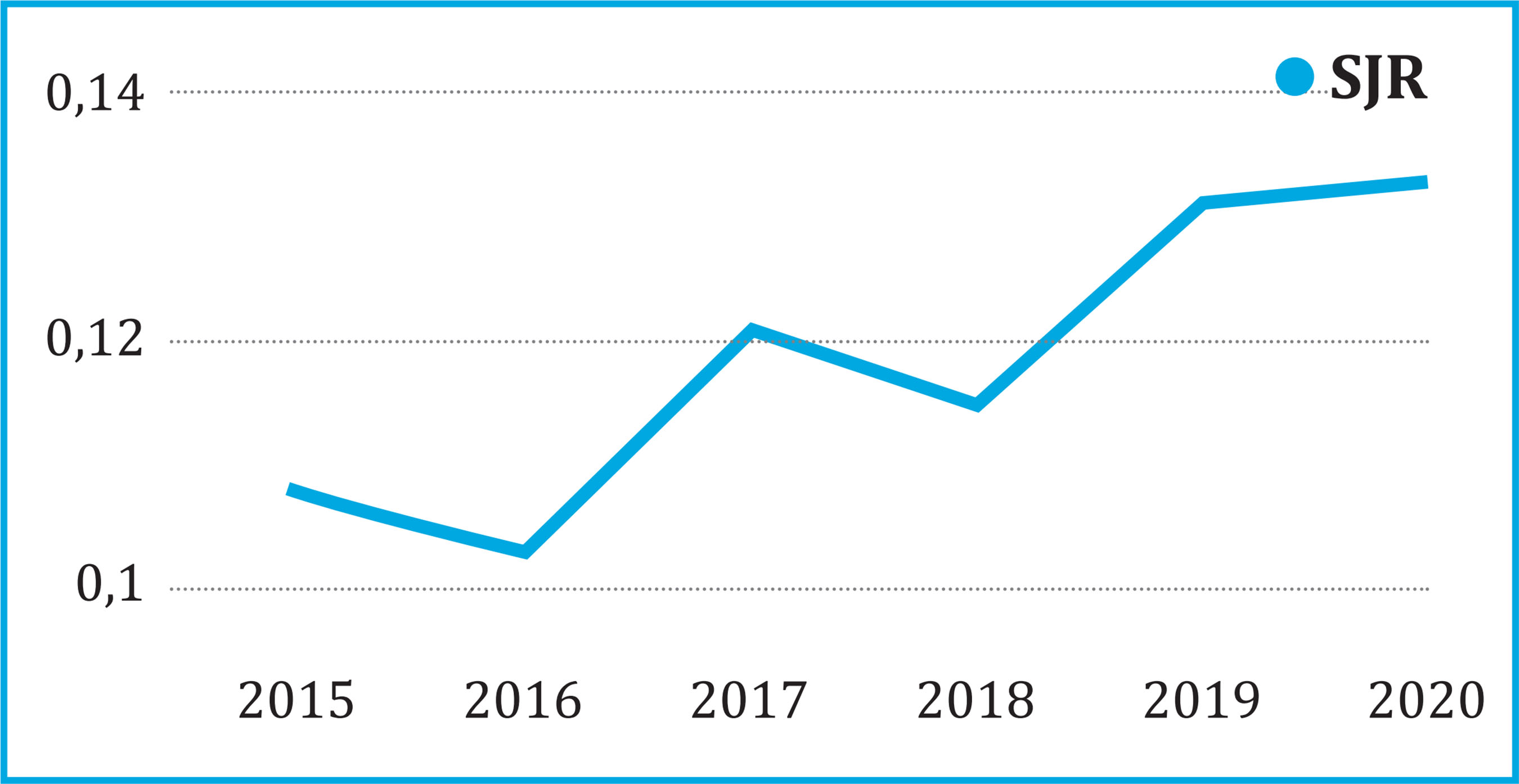Mi SciELO
Servicios Personalizados
Revista
Articulo
Indicadores
-
 Citado por SciELO
Citado por SciELO -
 Accesos
Accesos
Links relacionados
-
 Citado por Google
Citado por Google -
 Similares en
SciELO
Similares en
SciELO -
 Similares en Google
Similares en Google
Compartir
Revista de Osteoporosis y Metabolismo Mineral
versión On-line ISSN 2173-2345versión impresa ISSN 1889-836X
Rev Osteoporos Metab Miner vol.13 no.2 Madrid jun. 2021 Epub 16-Ago-2021
https://dx.doi.org/10.4321/s1889-836x2021000200001
The Revista de Osteoporosis y Metabolismo Mineral (ROMM) was created at the end of 2009 and was presented at the Congress of the Spanish Society for Bone Research (SEIOMM) that year, held in Santander. We have participated from the beginning, both in its creation, start-up and later development, until today. It is the SEIOMM associates who should assess our management. For our part, we believe that a cycle has been completed and that the renewal of the management team is appropriate. For this reason and through this editorial, we say farewell, thanking all those who have trusted and collaborated with us: boards of directors, members of the editorial committee and associates, some who have submitted articles and others who have served as reviewers. A special thanks to our collaborators on a day-to-day basis: Jesús and Concha, publishers of Ibáñez y Plaza; Gabriel Plaza, responsible for the website; and David Shea, translator of the journal, with whom it has always been so easy to work, and who with professionalism and dedication have contributed enormously to make this journal where it is right now. Thank you all.
In a previous article, recalling the first ten years of the journal, we reviewed the creation process and its beginnings1, a function that we believe has been fulfilled, without a doubt, with the consolidation of the magazine. The ROMM has been and continues to be the vehicle for publishing the communications presented to the annual Congresses of the SEIOMM. Another function, more debatable, is to serve as a means for associates to publish part of their research, ensuring that it is increasingly disseminated. We say debatable, because after 12 years at the helm of the journal, we think that the associates, in general, believe that it is unnecessary.
We have tried to ensure, on the one hand, that the ROMM is present in the largest number of databases, repositories and Web pages. Furthermore, to see that the quality of the articles published improves. If we take as a reference different tools dedicated to assessing both aspects, it would seem that both tasks have been fulfilled, with the presence in important databases such as Scopus, Google Academic and others such as ERIHPLUS and MIAR2,3, in addition to obtaining an index of impact.
WHERE ARE WE LISTED? DATABASES, DIRECTORIES AND REPOSITORIES WHERE THE ROMM IS INCLUDED
ROMM is currently included in the following databases and repositories: Scopus, Web of Sciences, SciELO, DOAJ, ERIHPLUS, Redalyc, IBECS, Embase, Open J-Gate, Free Medical Journals, American Society for Scientific Research (SIIC ), Google Scholar, Medes, ÄZ3, e-magazine@s, WorldCat, Latindex, EBSCO, Medic Latina, Dialnet, Safetylit, Mosby´s, Emcare, Academic Keys, CRUE, Hinari, REDIB, Emerging Sources Citation Index, British Library, ROAD and MIAR, a total of 31 databases.
Some of these databases feed back to each other, as is the case with DOAJ, SciELO and Dialnet. Whilst they are all important and without detracting from any of them, SciELO is widely established among Spanish and Portuguese-speaking countries, Redalyc covers mainly Spanish-American countries, especially Mexico, and Scopus is after Journal of Citation Reports, the most popular database used with its own “impact factor” which we will refer to later. Finally, Google Academic is becoming in recent years as a place to search for scientific articles complementary to PubMed, since all the articles that are collected in PubMed are also included in Google Academic, but the reverse is not the case.
There are two databases in which, due to their rigor, it has been especially difficult to be included. They are ERIHPLUS, a Norwegian database that rejects almost half of the applications2 and the University of Barcelona’s Information Matrix for Journal Analysis (MIAR, from Spanish acronym), which in turn collects information from 116 databases, rating journal quality. In the field of osteoporosis, ROMM is in the middle of the table3, with a score of 9.6 out of a possible maximum of 11 (see tables 1 and 2 ). In the Academic Google, within the Spanish magazines, the ROMM is located in position 71 of 994.
EVOLUTION OF ROMM IN SCOPUS
Included in the Scopus database, after three attempts, the ROMM had for the first time an “impact factor”, the one calculated by Scopus, which is the so-called Scimago Journal Rank or SJR. The first year that SJR had, in 2015 it was 0.108. It has been increasing on a yearly basis, currently attaining 0.133 in 2020 (see figure 1)5. We are in the 4th quartile (Q4), in the area of Endocrinology, Diabetes and Metabolism, which is where the journals dedicated to bone mineral metabolism are included. We are ranked 195 out of a total of 232 magazines6.
THE ROAD TO THE JOURNAL OF CITATION REPORTS (JCR) AND PUBMED
From the beginning, our goal has been the inclusion of ROMM in the JCR and with it, immediately in PubMed. It is the most prestigious database and despite the existence of other “impact factors” such as Scopus or even Google Scholar4-6, it is the impact factor par excellence.
We have twice requested the inclusion of the journal in the JCR, and on both occasions were rejected. Some reasons for this rejection could be debated, because they are based on opinions, and others could even be refuted, but the basis for the refusal to be included is undeniable: it is a home-based journal, in which authors, reviewers and editorial committee are repeated over and over again. Another reason they put forward is that the articles, in general, are not of sufficient quality. This reasoning is based on the limited impact they have in other scientific journals.
These drawbacks are difficult to solve. The journal has had a permanent shortage of articles since its creation. Completing each issue is a struggle. The request for quality originals from SEIOMM researchers is a constant, both from the SEIOMM website, and in corporate emails sent to associates by the Board of Directors, and finally, individually, from the Director to the SEIOMM researchers. However, the main source of original articles sent to the journal are those that are required to remedy a debt contracted by a research group when one of its members accesses a FEIOMM grant, either for research or to attend Congress. American Bone Mineral Metabolism (ASBMR). Therefore, the articles are sent as part of a "contract" and thus cover a need to continue to be eligible for future scholarships. They are, therefore, on many occasions, articles that constitute the remnants of an investigation whose original production was sent to a journal with an impact factor of the JCR, which on the other hand is reasonable and with which the ROMM cannot compete. Thus, the articles that we publish are not the best generated by each research group and for that same reason they are not referenced, with which the scientific repercussion of them in other journals will be low and this will make a good evaluation by the ROMM difficult. among JCR reviewers. Thus the vicious circle is closed.
WHAT IS THE FUTURE OF ROMM? WHAT DO SEIOMM MEMBERS WANT FROM THE JOURNAL?
The future of ROMM will be that which its members decide, but through their actions, which must require sending in quality publications, especially original ones. The more or less public manifestations of "unconditional support" for the journal will be of no use if this is not translated into facts: on the one hand, the sending of quality originals and, on the other, in collaboration as reviewers.
This is an enormous difficulty that we have encountered. Very few SEIOMM associates agree to review an article submitted to the journal, despite the fact that in the selection of said reviewer we take into account that the article that we request that they evaluate is from their usual area of work and/or research. On the contrary, for each review request that is accepted by the expert, we obtain an average of three rejections and this among those who respond to the email in which the review is requested. The absence of a response is not uncommon, in mail duly verified as correct. Other times, we observe that the review is written in a rapid, inconsistent way, lacking detail and documentation. Therefore, it does not help at all. At times, we have had to resort to personal favor to get a review.
The journal now enters a watershed moment. With an additional push from the new leadership team, perhaps the JCR evaluation could be requested within 3 years and it could be achieved. But we consider that we have completed a cycle and that we must make way for others who, with courage and enthusiasm (which we have exhausted), complete the task. Not only do we want it, but to the best of our ability we are unconditionally willing to collaborate in this endeavor.
We would like to conclude by extending our thanks to Manuel Naves Díaz, current SEIOMM President, in particular, for his sincere, total commitment to the journal and we wish him all the best.
Bibliografía
1 Sosa Henríquez M, Gómez de Tejada Romero MJ. Historia de Revista de Osteoporosis y Metabolismo Mineral. Su situación diez años después. Rev Osteoporos Metab Miner. 2018;10(1):3-6 [ Links ]
2 ERIHPLUS. Insightful Statistics. Disponible en: Search | ERIH PLUS | NSD (uib.no) Consultado el 30 de mayo de 2021. [ Links ]
3 MIAR. Revistas de Osteoporosis. Disponible en: MIAR 2021 live. Matriz de Información para el Análisis de Revistas (ub.edu). Consultado el 30 de mayo de 2021 [ Links ]
4 Delgado Lípez Cozar. Índice H de las revistas científicas española según Google Metrics. 2013-2017. Technical Report 2018. Disponible en: Índice H de las revistas científicas españolas según Google Scholar Metrics (20132017) (um.es). Consultado el 1 de junio de 2021. [ Links ]
5 Revista de Osteoporosis y Metabolismo Mineral. En Scopus: Revistas de Endocrinología, Diabetes Y Metabolismo. Journal Rankings on Endocrinology, Diabetes and Metabolism (scimagojr.com). Consultada el 1 de junio de 2021. [ Links ]
6 Revista de Osteoporosis y Metabolismo Mineral. Scimagojournal rank. Scopus. Disponible en: Revista de Osteoporosis y Metabolismo Mineral (scimagojr.com). Consultado el 30 de mayo de 2021. [ Links ]











 texto en
texto en 





